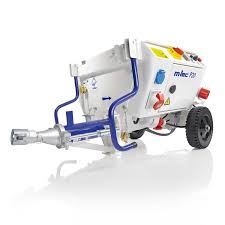When it comes to plastering your walls, there are a variety of options available. Two of the most common types of plaster are cement and gypsum. Both have their advantages and disadvantages and choosing between the two can be a difficult decision. In this article, we’ll take a closer look at cement plaster and gypsum plaster and help you decide which one is the best choice for your walls.
What is Cement Plaster?
Cement plaster, also known as Portland cement plaster, is a mixture of cement, sand, and water. It’s a popular choice for exterior walls, as it’s strong, durable, and weather-resistant. Cement plaster can also be used for interior walls, but it’s not as common as gypsum plaster.
Advantages of Cement Plaster:
– Strength: Cement plaster is incredibly strong and can withstand a lot of wear and tear.
– Durability: Cement plaster is resistant to moisture and can withstand extreme weather conditions.
– Longevity: Cement plaster can last for years without cracking or crumbling.
– Fire-resistant: Cement plaster is fire-resistant, making it a good choice for homes in areas prone to wildfires.
Disadvantages of Cement Plaster:
– Cost: Cement plaster is more expensive than gypsum plaster.
– Application: Cement plaster is more difficult to apply than gypsum plaster, and it requires more skill and experience.
– Drying time: Cement plaster takes longer to dry than gypsum plaster, which can delay construction.
What is Gypsum Plaster?
Gypsum plaster, also known as plaster of Paris, is a mixture of gypsum, sand, and water. It’s a popular choice for interior walls, as it’s easy to apply and gives a smooth finish. Gypsum plaster can also be used for exterior walls, but it’s not as strong or durable as cement plaster.
Advantages of Gypsum Plaster:
– Easy application: Gypsum plaster is easy to apply and can be done quickly.
– Smooth finish: Gypsum plaster gives a smooth and even finish, which makes it a popular choice for interior walls.
– Cost-effective: Gypsum plaster is less expensive than cement plaster.
Disadvantages of Gypsum Plaster:
– Moisture-sensitive: Gypsum plaster is sensitive to moisture and can be damaged if exposed to water.
– Durability: Gypsum plaster is not as durable as cement plaster and can be damaged easily.
– Fire-resistance: Gypsum plaster is not as fire-resistant as cement plaster.
Tile Adhesive and Grout for Tiles:
When it comes to tiling your walls, you’ll need to choose the right tile adhesive and grout for the job. Tile Adhesive is used to stick the tiles to the wall, while grout is used to fill in the gaps between the tiles.
There are a variety of tile adhesives and grouts available, and choosing the right one can be a difficult decision. Here are a few things to consider when choosing tile adhesive and grout:
– Type of tiles: Different types of tiles require different types of adhesive and grout for tiles. For example, ceramic tiles require a different adhesive and grout than natural stone tiles.
– Location: The location of the tiles will also affect your choice of adhesive and grout. For example, tiles in wet areas like bathrooms and kitchens require a waterproof adhesive and grout.
– Color: The color of the grout is also an important consideration. Light-colored grout can stain easily, while dark-colored grout can fade over time.
Cement Plastering:
Cement plastering is a popular choice for exterior walls, but it can also be used for interior walls. Here are a few tips for cement plastering:
– Preparation: Before you start plastering, make sure the surface is clean and free from debris. Any loose or crumbling plaster should be removed and any cracks should be filled in.
– Mixing: Mix the cement plaster according to the manufacturer’s instructions, making sure to use the correct ratio of cement, sand, and water.
– Application: Apply the plaster to the wall using a trowel, starting from the bottom and working your way up. Smooth out the plaster using a float or a trowel.
– Drying: Cement plaster takes longer to dry than gypsum plaster, so be patient. It’s important not to apply a second coat until the first coat is completely dry.
– Finishing: Once the plaster is dry, use sandpaper or a trowel to smooth out any rough spots. The surface can then be painted or decorated as desired.
In conclusion, both cement plaster and gypsum plaster have their advantages and disadvantages, and choosing between the two will depend on your specific needs and preferences. If you’re looking for strong and durable plaster for your exterior walls, cement plaster is a great choice. If you’re looking for an easy-to-apply plaster for your interior walls, gypsum plaster is a good option. When it comes to tiling your walls, make sure to choose the right adhesive and grout based on the type of tiles, location, and color. And if you’re considering cement plastering, follow the proper preparation, mixing, application, drying, and finishing techniques for the best results.

